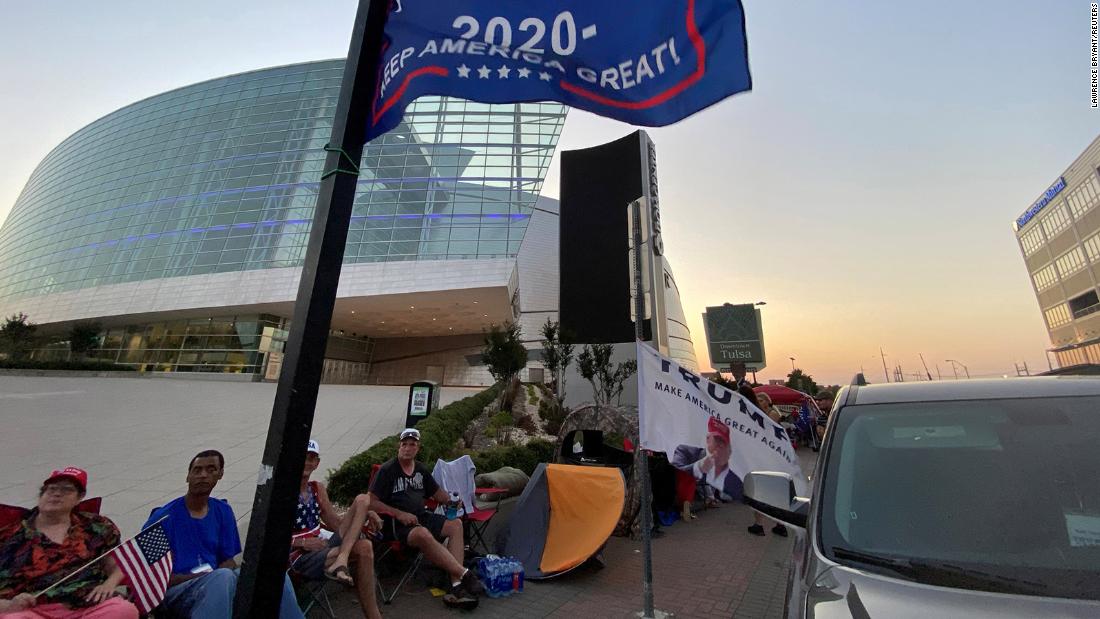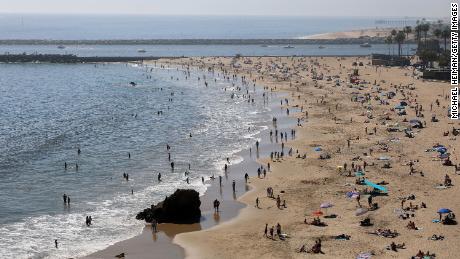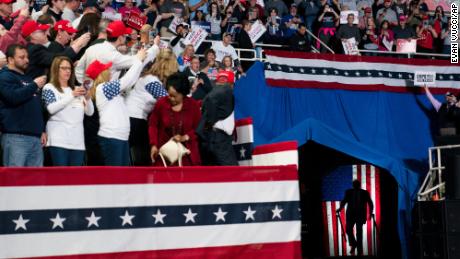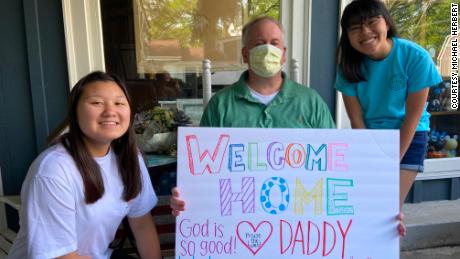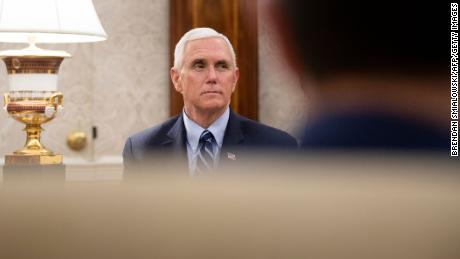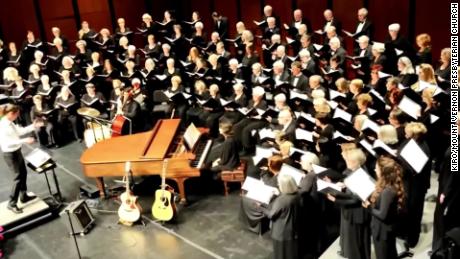How risky is it to attend a Trump campaign rally during a pandemic?
Tulsa’s Bank of Oklahoma Center arena holds 19,000; attendees will be admitted on a first-come, first-served basis. People have been lining up for days to secure their spots.
“We know what makes transmission of the virus occur more frequently, and that includes close contact, particularly without masking, crowds, [being] indoors versus outdoors, the duration of the contact, and then shouting also increases the possibility of transmission,” said Catherine Troisi, an infectious disease epidemiologist at The University of Texas Health Science Center at Houston. “There are going to be tens of thousands of people in attendance. So, it is a great place to spread virus. And from what I understand, these are not just people who live in Tulsa. There are people coming in from far away to go to the rally, so they’ll be returning to their home cities, and so that we may see spread outside of the Tulsa area.”
Dr. Howard Markel, a professor of the history of medicine and pediatrics and communicable diseases at the University of Michigan Medical School, echoed the concerns. “It’s in a crowded auditorium, I’m sure it’s recirculated air; people will be cheering and clapping and screaming. And there’s a risk of some of them may be infected with Covid. It’s the opposite of social distancing, it’s social crowding and that presents a risk, particularly as [infections are] kind of spurring up around the Sunbelt.”
How great is the risk?
Quantifying the risk is hard, but CNN contributor Erin Bromage, an associate professor of biology at the University of Massachusetts Dartmouth, tried to show how the virus could spread.
“You can do some basic numbers to work out how many people will be there that are infected,” he said. Consider an arena the size of BOK and Tulsa County’s incident rate is about 3 per 1,000 — but the rally will draw people from other places, too.
“So, of that 100, you’re looking at 20 people that are seriously releasing lots of virus there,” Bromage estimated.
Being indoors, he said, increases the risk of transmission about 20-fold. Not wearing masks increases it more. “Add in yelling, chanting, singing — that’s a 10- to 50-fold increase in viral particles or respiratory droplets coming out,” he said.
And finally, people will be in fixed spots for long periods, raising the risk mainly for the people who are within a certain radius of someone shedding a lot of virus.
So while a single individual on average spreads the virus to two to three other people, in this scenario — a packed arena where there’s a lot of shouting and possibly little mask-wearing — each of those 20 attendees shedding a lot of virus could potentially infect 40 to 50 people, Bromage said. Those 800 to 1,000 newly infected people go home, possibly out of state, and potentially spread it even more. It is the anatomy of an outbreak.
“From an infection-control standpoint, it’s a terrible idea,” Bromage said.
Risk is linked to rallygoers’ health, too
While the demographics of the people who make it into the BOK area are unknown, it’s a fair bet that many will be from, if not Tulsa, then Oklahoma, which in terms of health ranks low compared to other states, said Karen Dawn, an assistant professor in the School of Nursing at George Washington University.
“So you add the [indoor] location, you add the close proximity, you add the increasing number of cases and you add the high risk of chronic diseases. It’s a recipe for disaster,” she said.
Rally organizers say that before entrance, attendees will have their temperatures checked and will receive hand sanitizers and face masks. But none of the experts CNN spoke with said those measures will be enough, especially since an infected person is typically shedding virus two days before showing symptoms and many people are asymptomatic carriers of the virus.
“We know that 40%, maybe even higher, of cases are asymptomatic, meaning they don’t have a fever. So, you might catch a few people, but not the vast majority of infected people,” says Troisi, the epidemiologist. “Handing out masks is good, but better would be requiring masks and modeling behavior of wearing masks. And given that mask wearing has become a political statement, I think there will be social pressure not to wear a mask. In this event, the hand sanitizer is good, but I don’t think you’re going to stop a lot of cases that way. Most of the spread is through the air.”
‘They’re going to kill some of them’
To Art Caplan, a bioethicist at NYU Langone Health and CNN medical contributor, that’s disingenuous.
“The people who come to the rally, they don’t care about them except as a photo op, because they’re going to kill some of them and some of their family and friends,” Caplan said during an appearance on CNN Newsroom this week. “What we’re seeing is pure propaganda that is damaging to the American people.”
“To suggest that we are out of the woods, like Mike Pence said, is just breathtakingly ignorant of how this pandemic is unfolding,” says Markel.
Markel would know. As director of the Center for the History of Medicine at the University of Michigan Medical School, he is very familiar with the ebb and flow of a pandemic. He draws a parallel between this pandemic and the 1918-1919 influenza pandemic.
“There were public gathering bans, and there were closures of theaters, vaudeville houses, dance halls, bars, bowling alleys, even baseball games. So, it’s the last great effort to social distance on a level this large, and for a viral threat this great,” he explained. “But once people started going back out in 1918-1919 and resuming their lives, the influenza virus was still circulating, just as the Covid-19 virus is still circulating. And as they moved about, a second wave appeared. And so I worry — as we come out of hiding and we start interacting with more and more people, we are increasing our risk.”
“It’s really about the case fatality rate — how many people get sick and die of this disease — that has motivated the stoppage of our country for two or three months. You wouldn’t do this if it were just seasonal flu because these measures are simply so disruptive,” Markel said, pointing out that going to a political rally is not a necessary risk. “I just don’t think this is something that is worth doing in this particular time, with this particular public health problem going on.”
Ultimately, the experts say we won’t know for two or three weeks, maybe even a month, if this rally contributed to a spike in cases. With Oklahoma already seeing an increase in cases, it might be difficult to tease out even then.
None of the experts CNN talked to for this story — Bromage, Dawn, Markel and Troisi — said they would be willing to risk it.
Even some of Trump’s political allies appear to be playing it safe. Arkansas Gov. Asa Hutchinson said in a press conference Thursday that he would not be attending, despite his state’s proximity to Tulsa. He stressed the importance of wearing a mask and keeping sufficient social distance, and — if those safety precautions are not taken — he encouraged attendees to get tested after the rally.
Advice for attending a rally
For those who do plan to attend, here’s some advice from the experts on how to stay safe and keep others safe.
“Number one: Stay home if you’re sick. It’s really, really dangerous; other people may get sick. If you’re immunocompromised or if you have a weakened immune system, if you have any chronic diseases — heart disease; any of the respiratory diseases including asthma, emphysema, COPD; diabetes — stay home. If you are obese, stay home. If you’re over 65, please stay home,” said Dawn. “If you do go, please wear a mask, physically distance yourself at least six feet from other people — I know that’s really hard to do — and don’t shout. And then once you leave the rally, quarantine yourself for two weeks.”
Bromage agreed. “I’d like to say don’t go. We know it’s just not smart, especially if you [are older] and have any of these health risks. I don’t care about your political affiliation — it’s just that if you’ve got those risks, you should be doing things that help protect your health,” he said.
“If you’re going to go, your job is to minimize interactions; the more handshakes that you have, the more groups that you mix with, each one of those interactions increases your chance of actually being exposed to the virus. I wouldn’t dwell in spaces for longer than I need to. Masks would be great. They will protect the others around you and provide some protection for you if you’re wearing a good quality one,” said Bromage.
He recommends self-quarantine for about four days after the rally, and then getting tested to see if you were infected.
“My most strong advice would be, if you’re not going to do that, then don’t go around anybody that is high-risk for a few weeks after that rally. If it hits a population of vulnerable people — because you went out and visited in-laws or something — you’re going to cause a problem.”
![]()


